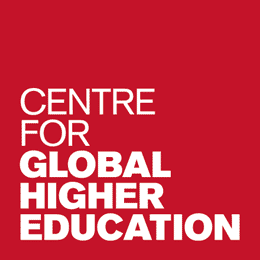Realising hidden identities in higher education
Working in higher education involves a significant number of ‘hidden’ activities and identities that are not necessarily made explicit in job descriptions.
This was one of the trends from today’s CGHE working paper, and these hidden roles include the pastoral care of students, practitioner and community activity, teaching by those on research only-contracts, and unfunded research by those on teaching-only contracts.
They occur for a number of reasons – sometimes out of an individual’s interest and sometimes to provide synergy, or what one person called “succour”, in support of the main role. They also occur in order to extend experience in ways that would help to promote a career, or even in order to provide a possible exit strategy if necessary.
Many of these trends are as a result of local practice filtering upwards so that they ultimately influence institutional policy, for instance in the form of more flexible work patterns or career paths.
This is often a result of the offices of a local manager such as a head of department, who is in a position to make adjustments to individual roles, playing to strength and/or filling gaps in an individual’s profile. The influence of such managers can be critical, and they are also in the best position to understand the motivational value of, for instance, flexible approaches to workloads and careers.
Another finding is that management roles such as head of department, leading a teaching or research programme, or managing an outreach or public engagement programme, are increasingly offered as a path to promotion, to reinforce teaching and research profiles.
There is also a group of individuals emerging who work in an online environment, sometimes 24/7, for whom there is a noticeable lack of fit with institutional structures, so that recognition and progression criteria for what might be termed ‘virtual’ academics would appear to be significantly underdeveloped.
The study therefore suggests that there has been a significant shift from linear careers to a variety of possible career trajectories, some of them unique to the individual. The shape of a career may depend increasingly on an individual’s own initiatives and contacts.
Thus, younger generations of staff may be more inclined to see academia in terms of a job that is not dissimilar from other professional roles, in which life experience and networks may be as significant as academic or professional knowledge itself.
At a more detailed level, respondents undertaking academic and associated activity were categorised as taking Mainstream (adhering to formal structures and timelines, focusing on activities deemed to be most valuable), Portfolio (a cumulative gathering of academic and associated experience, internal and external), and Niche (addressing personal values, interests and strengths), approaches to academic roles and careers.
Within this framework, issues were explored around the extent to which individuals may seek to take a holistic approach, particularly those formally appointed to undertake both teaching and research, or to focus on strengths rather than seeking to rectify gaps in their profile.
This was a key tension that arose, and may have contributed to a shift away from Mainstream to Portfolio and Niche approaches. It would appear to be more difficult to adopt a Mainstream approach to a career than in the past, despite the best efforts of institutions to introduce a variety of career pathways, partly because of mixed messages, both in practice and in formal policy, about the sustainability of teaching and other possible non-research-oriented routes.
As a result, it would appear that increased mobility and diversification may have modulated the nature of the individual academic’s relationship with their disciplines and institutions as framing boundaries for activity, in that both can be used as platforms for broader portfolios, credibility, and recognition.
The emergence of local practices as a key but unremarked element in individuals’ roles and identities suggests that an element of fluidity, and even ambiguity, for instance in relation to progression pathways, may suit both institutions and individuals if policies can be flexed locally.
A fuller account of the project is given in CGHE working paper, A delicate balance: optimising individual aspirations and institutional missions in higher education.
